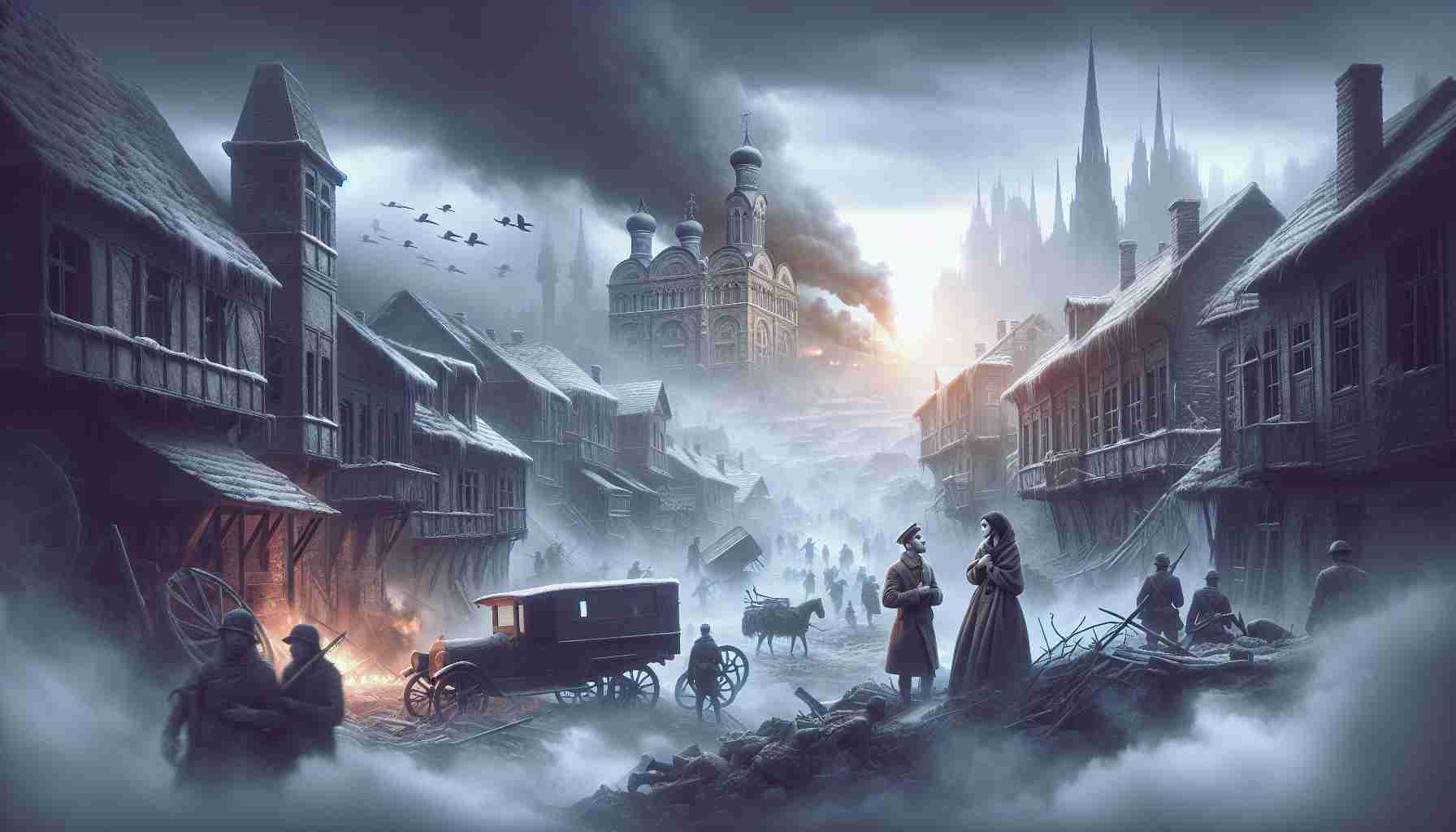- A sepia-toned photograph from 1870 sparked UFO speculation when resurfaced in 2002.
- Experts analyzed the image, initially believing it to show extraterrestrial life.
- The “UFO” was ultimately identified as a wooden folding ruler used for scale in a meteorological expedition.
- Ryan Mullahy played a key role in uncovering the true origin of the photograph.
- This story illustrates how context can greatly influence our perception of images.
- Photography invites diverse interpretations, reminding us of its subjective nature.
Prepare to embark on a captivating journey that blurs the lines between reality and imagination! A photograph that once sparked heated debates about extraterrestrial life has become a thrilling tale of misinterpretation and mystery.
In 2002, a sepia-toned image from 1870 surfaced on eBay, igniting hopes that it was the oldest photograph of a UFO. Sold for $385 to Samuel M. Sherman, this oddly cropped snapshot featured a cigar-shaped object looming over snow-covered terrain. Experts joined the frenzy, suggesting it might be proof of alien visitors. Theories ran wild—from claims of motherships to swirling conspiracy theories touting the shape’s mysterious symbols.
Yet, the truth behind this enigma is far more grounded. Enter Ryan Mullahy, founder of New Hampshire UFO Research, who delved deep to uncover its origins. While the image is indeed genuine, he revealed that it’s simply a cropped part of a photograph taken by Amos Clough and Howard Kimball during a 19th-century meteorological expedition. The “UFO” was nothing more than a wooden folding ruler, used to provide scale for their stunning arctic images.
This revelation shows just how easily context can mislead our perceptions. A mundane snapshot transformed into a sensational story simply because of how we choose to interpret it.
Next time you encounter an image that raises your eyebrows, remember: the beauty of photography lies in its power to elicit personal narratives—what it becomes is entirely up to you.
Unraveling the Mystery: The True Story Behind the 1870 UFO Photo
The Fascination with the 1870 Photograph
The 1870 sepia-toned photograph, initially branded as the world’s oldest UFO image, captivated many due to its peculiar depiction of a cigar-shaped object. Despite sensational theories linking it to extraterrestrial life, a thorough investigation revealed that it depicted a wooden folding ruler from a meteorological expedition. This incident underscores the critical importance of context in interpretation.
Innovations in Photographic Analysis
Advancements in technology have transformed how we analyze historical photographs. For instance, modern techniques like image enhancement software and artificial intelligence can help historians and researchers verify the authenticity of old photographs more accurately than ever before. These innovations offer tools that could prevent future misinterpretations similar to that of the 1870 photograph.
Insights into UFO Phenomena
The attraction to UFOs is reflective of broader cultural phenomena. UFO sightings have peaked during times of social change and uncertainty, often coinciding with technological advancements that stir public curiosity. The 1870 UFO photograph may represent more than just an image; it’s emblematic of a long-standing human fascination with the unknown, a characteristic that persists even today.
Key Questions Addressed
1. What are the historical context and significance of the 1870 photograph?
The photograph is part of a collection taken during a meteorological expedition by Amos Clough and Howard Kimball, capturing significant meteorological phenomena of the 19th century. Its initial misinterpretation as evidence of UFOs highlights societal tendencies to find extraordinary explanations for the mundane.
2. How have technological advances changed our understanding of historical photographs?
With the rise of image processing technologies and AI, researchers can better analyze authenticity and context, providing clarity in historical narratives and preventing sensationalism in reporting.
3. What does society’s interest in UFOs reveal about cultural perceptions of the unknown?
The obsession with UFO phenomena often mirrors broader cultural anxieties regarding technology, change, and the universe. This fascination points to a deep-seated desire to explore and understand what lies beyond our current knowledge.
Emerging Trends in UFO Research
Recent years have witnessed a revival of interest in unidentified aerial phenomena (UAP), propelled by government reports and civilian investigations. Public perception is shifting towards a more scientific and less sensationalized view, focusing on data collection and rigorous analysis instead of conspiracy theories. Research is increasingly incorporating more advanced methodologies and collaborative efforts with scientists, historians, and the public at large.
Conclusion
The tale of the 1870 photograph serves as a reminder of the lens through which we perceive the world. Photographic images can be powerful storytelling tools, but they require critical analysis to uncover their true narratives. As technology continues to evolve, our understanding of both historical documents and contemporary phenomena will sharpen, ensuring a more informed interpretation of our experiences.
For additional insights about UFOs and photography, visit NH UFO Research.




















